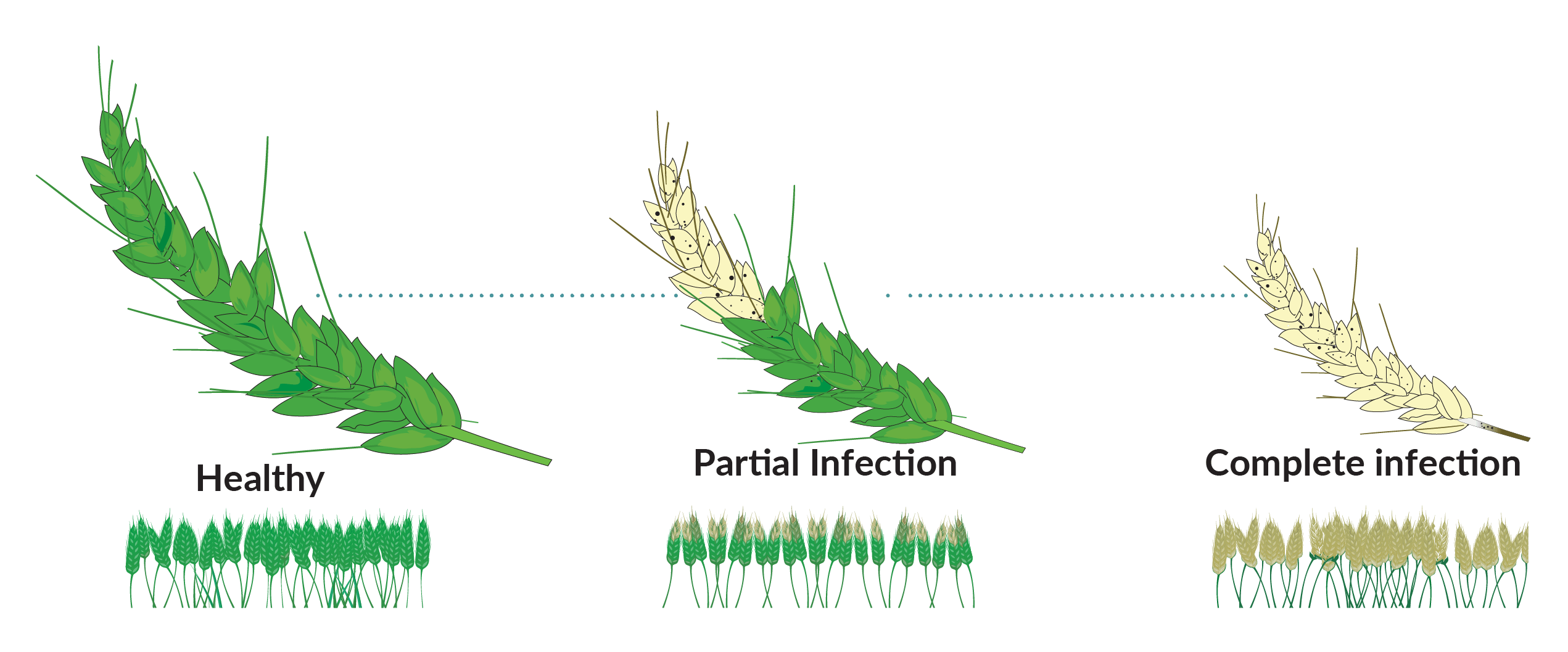What is wheat blast?
- From
-
Published on
11.12.19
- Impact Area
-
Funders
Australian Centre for International Agricultural Research, Bangladesh, India, Sweden, United States Department of Agriculture, United States of America

There are no widely available resistant varieties, and fungicides are expensive and provide only a partial defense. They are also often hard to obtain or use in the regions where blast occurs, and must be applied well before any symptoms appear — a prohibitive expense for many farmers.
Researchers from the International Maize and Wheat Improvement Center (CIMMYT) are partnering with national researchers and meteorological agencies on ways to work towards solutions to mitigate the threat of wheat blast and increase the resilience of smallholder farmers in the region. Through the USAID-supported Cereal Systems Initiative for South Asia (CSISA) and Climate Services for Resilient Development (CSRD) projects, CIMMYT and its partners are developing agronomic methods and early warning systems so farmers can prepare for and reduce the impact of wheat blast.
Related news
-

Australia partners with International Livestock Research Institute to upskill researchers from Africa and Asia
International Livestock Research Institute (ILRI)13.11.25-
Food security
-
Poverty reduction, livelihoods & jobs
Australia has joined forces with the International Livestock Research Institute (ILRI) to support th…
Read more -
-

Next-gen rice lines top check varieties at 7.5 t/ha in ESA
International Rice Research Institute (IRRI)11.11.25-
Food security
MOROGORO, Tanzania (8 October 2025) — Elite rice lines are outperforming the current popular varie…
Read more -
-

QTL Profiling Now Live on EBS
International Rice Research Institute (IRRI)11.11.25-
Food security
QTL profiling is now integrated into the EBS Platform’s MDA module. Teams across CGIAR research…
Read more -
